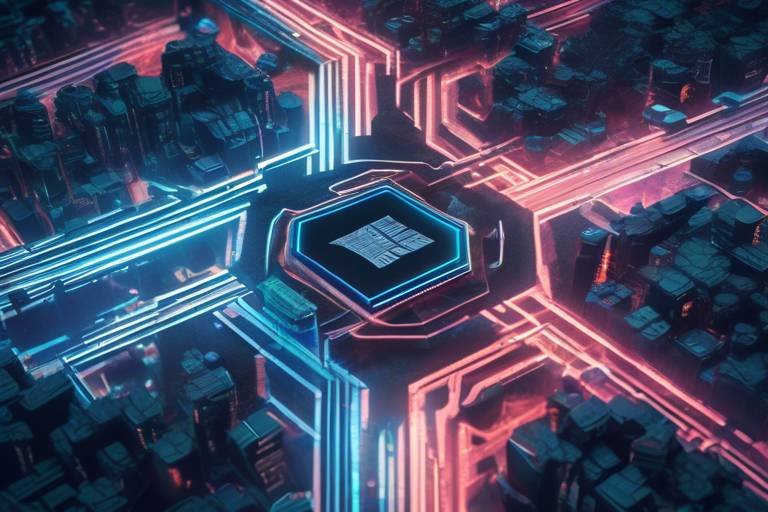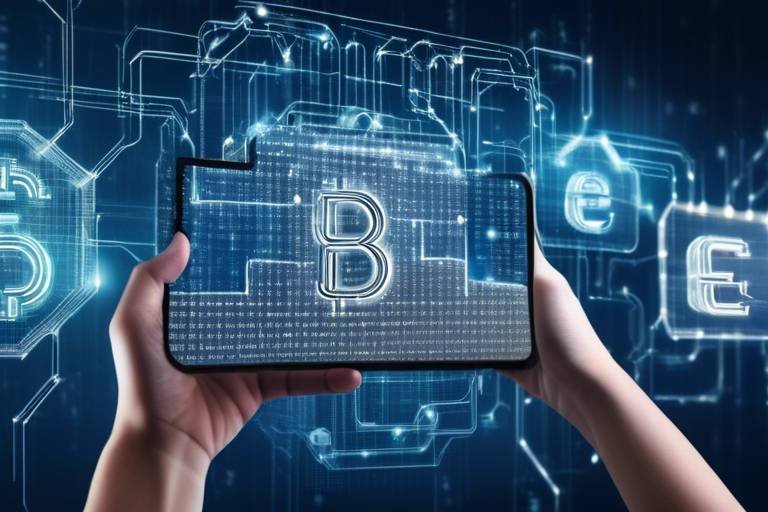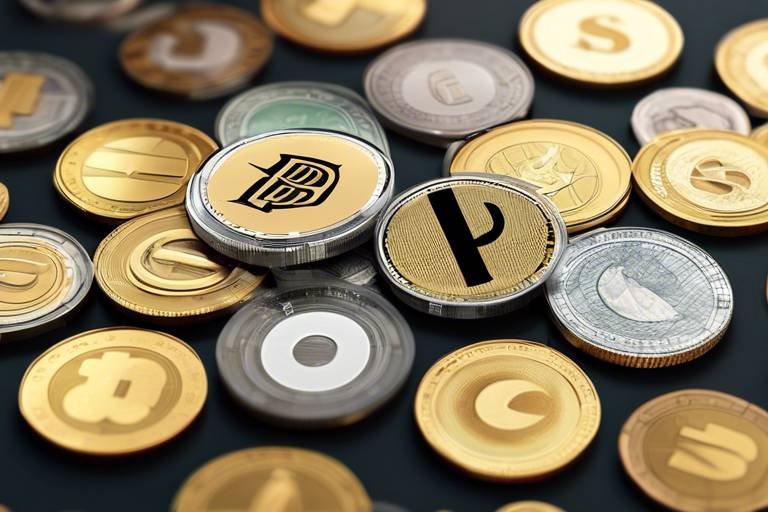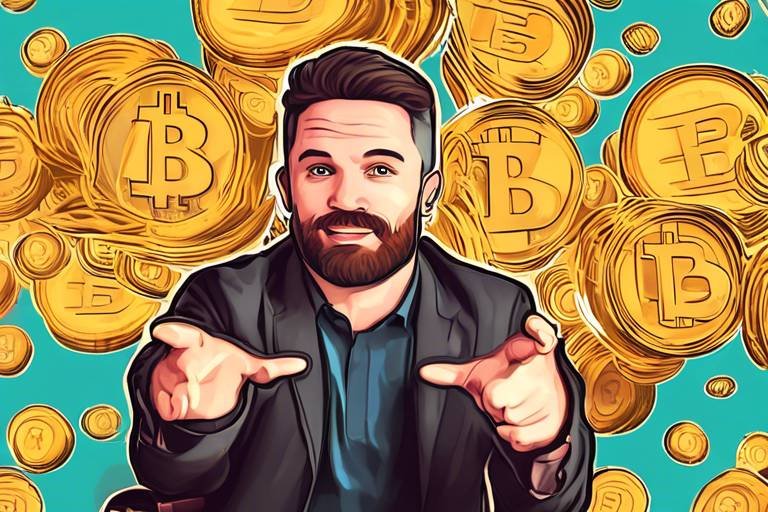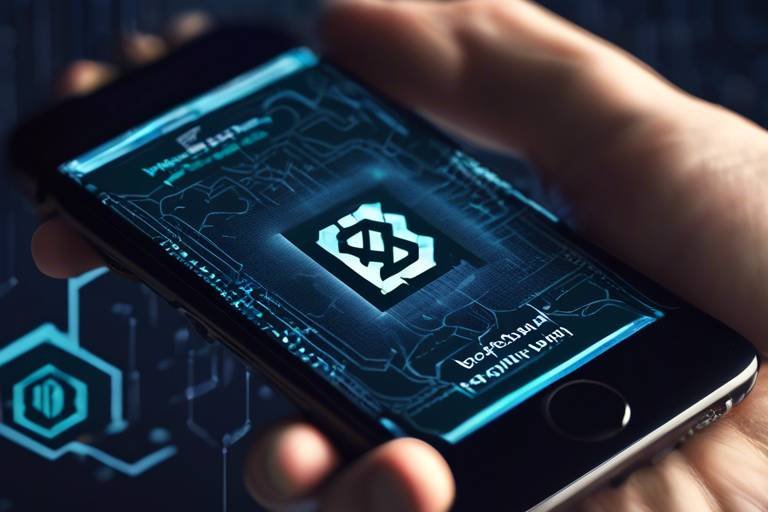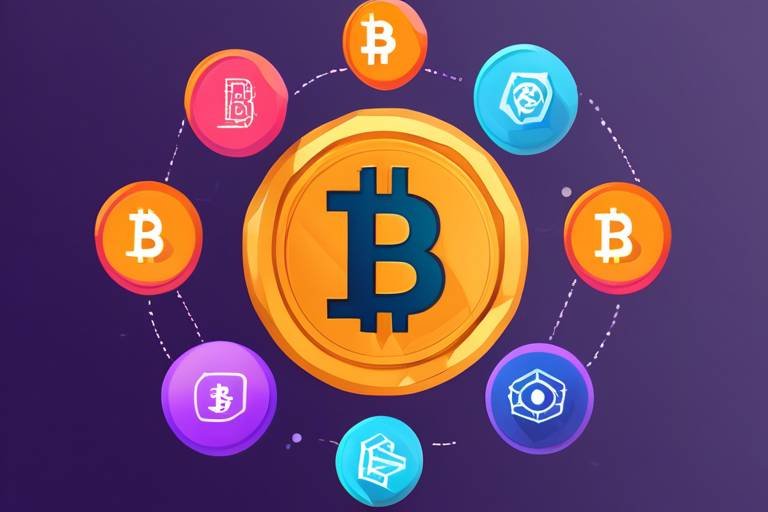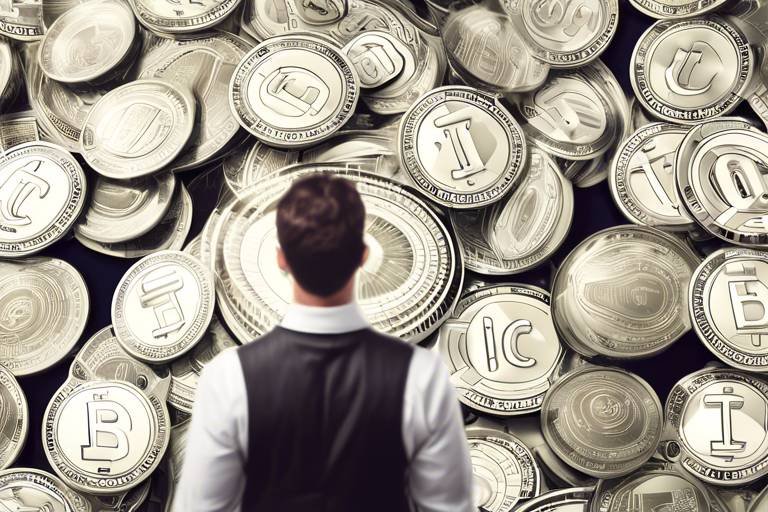The Intersection of Gaming and Blockchain Technology
In the ever-evolving landscape of technology, few innovations have captured the imagination quite like blockchain technology. While it initially gained fame as the backbone of cryptocurrencies like Bitcoin, its potential has transcended beyond finance, making significant inroads into various sectors, particularly the gaming industry. This article explores how blockchain technology is transforming the gaming industry, enhancing player experiences, and creating new economic opportunities through decentralized systems and digital asset ownership.
Have you ever wondered why blockchain is becoming such a buzzword in gaming? The answer lies in its ability to provide transparency and security. Traditional gaming platforms often operate in silos, where players have little to no control over their in-game assets. With blockchain, players can verify ownership and engage in transactions without the need for intermediaries. This growing popularity is not just a trend; it’s a potential revolution in how games are developed, played, and monetized. Imagine a world where you can truly own your in-game items, trade them freely, and even profit from them. This is the promise that blockchain brings to the gaming landscape.
Decentralized gaming ecosystems are like a breath of fresh air for players who seek true ownership of their in-game assets. In these ecosystems, players are no longer mere consumers; they become stakeholders. This shift changes the dynamics of gaming, offering benefits not just to players but also to developers. Developers can create more engaging content, while players enjoy a sense of ownership that traditional gaming models lack. For instance, in a decentralized game, players can buy, sell, or trade their assets on open markets, creating a vibrant economy that thrives on player interaction.
One of the most exciting developments in the intersection of gaming and blockchain is the rise of Non-Fungible Tokens (NFTs). These unique digital assets allow players to buy, sell, and trade items that have real-world value. Imagine owning a rare sword in a fantasy game; with NFTs, that sword is not just a digital representation but a unique asset that you can sell or trade. This capability enhances player engagement by creating a sense of scarcity and value around in-game items. Players are no longer just grinding for rewards; they are investing in their gaming experience.
So, how exactly do NFTs create value for players? Think of it as turning your gaming passion into a potential source of income. Players can monetize their gaming experiences by creating, trading, or selling NFTs. Whether it's a unique character skin, a virtual land plot, or an exclusive in-game item, these assets can appreciate over time, allowing players to invest in their hobby. This shift not only enriches the gaming experience but also empowers players financially. The gaming community is transforming from a group of consumers into a vibrant marketplace where creativity and investment intersect.
However, the journey with NFTs is not without its bumps. While they offer exciting opportunities, challenges such as market volatility and environmental concerns loom large. The NFT market can be unpredictable, with values fluctuating wildly, making it a risky investment for players. Additionally, the environmental impact of blockchain technology raises questions about sustainability. As the gaming community embraces this new frontier, addressing these limitations will be crucial to ensure a fair and enjoyable experience for all participants.
Another groundbreaking aspect of blockchain technology in gaming is the use of smart contracts. These self-executing contracts facilitate automated transactions and enforce rules within gaming environments. Imagine playing a game where the rules are immutable and transparently enforced by code. Smart contracts enhance gameplay by ensuring fairness and reducing the risk of fraud. They can automate rewards, manage in-game economies, and even facilitate player-versus-player transactions without the need for a central authority.
As we look ahead, the future of gaming intertwined with blockchain technology is nothing short of promising. The integration of these technologies is likely to usher in a new era of innovation. We can expect to see trends such as cross-game asset interoperability, where players can use their NFTs across different gaming platforms. This kind of integration could redefine how we view gaming and digital ownership, creating a more interconnected and immersive experience.
The synergy between gaming and blockchain could lead to fascinating collaborations with other sectors. For example, partnerships with the art world could allow gamers to own and trade digital art as NFTs, creating a unique blend of entertainment and investment. This convergence could redefine not just gaming, but the entire landscape of digital ownership and creativity.
As blockchain gaming continues to grow, the importance of regulatory frameworks cannot be overstated. Regulations will need to adapt to ensure a safe and fair gaming environment for all participants. This includes addressing issues such as consumer protection, fraud prevention, and the environmental impact of blockchain technology. A well-regulated environment will foster trust and encourage more players to engage with blockchain gaming.
- What is blockchain technology? Blockchain is a decentralized digital ledger that records transactions across many computers securely.
- How do NFTs work in gaming? NFTs represent unique in-game assets that players can buy, sell, and trade, providing real ownership.
- What are smart contracts? Smart contracts are self-executing contracts with the terms of the agreement directly written into code.
- Are there risks associated with blockchain gaming? Yes, risks include market volatility, environmental concerns, and potential regulatory issues.

[The Rise of Blockchain in Gaming]
Blockchain technology is making waves in the gaming world, and it's not just a passing trend. Imagine a world where players have true ownership of their in-game assets, where every sword, skin, or collectible is securely stored on a decentralized ledger. This is the reality that blockchain is bringing to the forefront of gaming. The **transparency** and **security** offered by blockchain are game-changers, allowing players to engage in a more trustworthy environment. But what exactly is driving this shift?
One of the primary reasons for the rise of blockchain in gaming is the increasing demand for **player autonomy**. Gamers are tired of being at the mercy of centralized platforms that can change rules, revoke access, or alter the value of their hard-earned assets overnight. With blockchain, players can rest easy knowing that their digital possessions are protected by cryptographic security, making it nearly impossible for anyone to tamper with their ownership rights.
Furthermore, the gaming industry has witnessed a significant shift towards **digital economies**. Players are not just playing games; they are participating in vibrant ecosystems where they can buy, sell, and trade assets. Blockchain enables these transactions to happen seamlessly and securely. For instance, players can trade their unique items with others across the globe without the need for a middleman. This decentralization not only empowers players but also fosters a sense of community and collaboration.
As more developers recognize the potential of blockchain, we can expect a surge in innovative gaming experiences. Traditional gaming models often leave players feeling like mere consumers, but blockchain flips the script. Players become stakeholders in their gaming experiences, contributing to the game's ecosystem while reaping rewards. This shift is not just beneficial for players; it also opens up new revenue streams for developers, making it a win-win situation.
However, with great power comes great responsibility. Developers must navigate the complexities of integrating blockchain into their games. It’s not just about adding a layer of technology; it’s about enhancing the overall player experience. The games that successfully leverage blockchain will be those that prioritize **user experience** and ensure that the technology serves to enhance gameplay rather than complicate it.
In conclusion, the rise of blockchain in gaming is not just a trend; it's a transformative movement that is reshaping how we interact with digital worlds. With its promise of transparency, security, and player ownership, blockchain technology is poised to revolutionize the gaming landscape. As we look ahead, it will be exciting to see how this technology continues to evolve and what new opportunities it will create for players and developers alike.
- What is blockchain technology? Blockchain is a decentralized digital ledger that records transactions across many computers in a way that the registered transactions cannot be altered retroactively.
- How does blockchain enhance gaming? It provides transparency, security, and true ownership of in-game assets, allowing players to trade and sell their items freely.
- What are NFTs in gaming? Non-Fungible Tokens (NFTs) are unique digital assets that represent ownership of a specific item or piece of content within a game.
- Are there any limitations to blockchain gaming? Yes, challenges include market volatility, environmental concerns, and the need for regulatory frameworks.

[Decentralized Gaming Ecosystems]
Decentralized gaming ecosystems are rapidly changing the way players interact with games, offering a revolutionary shift from traditional gaming models. Imagine a world where you truly own your in-game assets, where every sword, skin, or rare item you acquire isn't just a temporary possession but a digital asset that you can trade, sell, or keep forever. This is the promise of decentralized gaming, powered by blockchain technology. By utilizing decentralized networks, these ecosystems provide players with unprecedented ownership and control over their gaming experiences.
In a traditional gaming environment, players often find themselves at the mercy of game developers and publishers. They can pour hours into a game, only to have their progress reset or their assets rendered worthless when a game is discontinued. Decentralized ecosystems, however, flip this narrative on its head. Here, players are not just consumers; they become stakeholders in the game's economy. This model not only empowers players but also fosters a community-driven environment where collaboration and creativity thrive.
One of the most compelling aspects of decentralized gaming ecosystems is the concept of interoperability. In these ecosystems, assets can often be used across multiple games, creating a rich tapestry of interconnected experiences. For instance, imagine acquiring a unique character skin in one game and then using it in another game entirely. This cross-game functionality not only enhances player engagement but also adds layers of excitement and value to the gaming experience.
Furthermore, decentralized gaming ecosystems can significantly benefit developers as well. By leveraging blockchain technology, developers can create transparent and fair monetization models. They can implement play-to-earn systems, where players earn real-world value through their in-game actions. This not only incentivizes players but also creates a sustainable economic model that can support ongoing game development and innovation.
To illustrate the benefits of decentralized gaming ecosystems, consider the following table that outlines key advantages for both players and developers:
| Benefits | For Players | For Developers |
|---|---|---|
| Ownership | True ownership of in-game assets | Control over game economies |
| Interoperability | Use assets across multiple games | Expand audience reach |
| Monetization | Earn real-world value | Sustainable revenue streams |
| Community Engagement | Active participation in game development | Feedback-driven improvements |
As we look to the future, the potential of decentralized gaming ecosystems seems limitless. The combination of blockchain technology and gaming not only transforms how we play but also how we perceive value in digital spaces. With the rise of decentralized platforms, players are becoming active participants in shaping their gaming experiences, leading to richer, more immersive worlds. This shift is not just a trend; it’s the dawn of a new era in gaming where players and developers collaborate to create vibrant, engaging, and economically sustainable ecosystems.
In conclusion, decentralized gaming ecosystems represent a paradigm shift in the gaming industry. By empowering players and providing developers with innovative tools, these ecosystems are paving the way for a future where gaming is more than just a pastime—it's an economic and social phenomenon. As we continue to explore the intersection of gaming and blockchain technology, one thing is clear: the best is yet to come.
- What are decentralized gaming ecosystems?
Decentralized gaming ecosystems are platforms that utilize blockchain technology to allow players true ownership of in-game assets and create a more interactive gaming experience.
- How do players benefit from these ecosystems?
Players benefit by having real ownership of their assets, the ability to trade or sell them, and the opportunity to earn real-world value through gameplay.
- What role do developers play in decentralized gaming?
Developers can create transparent monetization models, engage with their community, and benefit from sustainable revenue through innovative gameplay mechanics.

[Non-Fungible Tokens (NFTs)]
In the ever-evolving landscape of gaming, Non-Fungible Tokens (NFTs) have emerged as a groundbreaking innovation, reshaping how players interact with their virtual worlds. Unlike traditional currencies or assets that can be exchanged on a one-to-one basis, NFTs represent unique items or experiences that cannot be replicated or exchanged for something of equal value. Think of them as digital collectibles—each one distinct and imbued with its own value and history. This uniqueness is what makes NFTs incredibly appealing to gamers, as they can own, trade, and showcase their digital possessions in ways that were previously unimaginable.
The integration of NFTs into gaming has opened up a treasure trove of opportunities for players. Imagine owning a rare sword in a fantasy game or a limited-edition skin for your character that no one else possesses. These digital assets can be bought, sold, or traded on various marketplaces, creating a vibrant economy within the gaming universe. Players are no longer just participants; they are also investors, with the potential to monetize their gaming experiences. In fact, the ability to trade these assets can lead to substantial profits, especially for those who have a keen eye for what’s valuable.
Moreover, NFTs enhance player engagement by fostering a sense of community and belonging. Gamers can showcase their collections, participate in exclusive events, and even collaborate with others to create new content. This interconnectedness cultivates a dynamic environment where players feel more invested in the games they love. However, as with any trend, there are challenges and considerations to keep in mind. The market for NFTs can be volatile, and not every asset will appreciate in value. Therefore, players need to approach this new frontier with a mix of enthusiasm and caution.
To further illustrate the impact of NFTs on the gaming industry, consider the following table that outlines key benefits and challenges associated with their use:
| Benefits | Challenges |
|---|---|
| True ownership of digital assets | Market volatility |
| Potential for real-world value | Environmental concerns |
| Enhanced player engagement | Regulatory uncertainties |
| Creation of vibrant gaming economies | Technical barriers for new users |
As we continue to explore the intersection of gaming and blockchain technology, it’s clear that NFTs are not just a passing fad; they are a fundamental shift in how we perceive ownership and value in the digital realm. The potential for innovation is immense, and as developers continue to create new and engaging content, we can expect to see even more exciting applications of NFTs in gaming. So, whether you're a seasoned gamer or a curious newcomer, the world of NFTs offers a thrilling opportunity to dive deeper into the games you love while potentially reaping financial rewards.
- What are NFTs? NFTs are unique digital assets that represent ownership of a specific item or experience in a game, secured using blockchain technology.
- How can I buy NFTs in games? You can purchase NFTs through various online marketplaces that specialize in digital assets, often using cryptocurrency.
- Are NFTs a good investment? While NFTs can appreciate in value, they also carry risks due to market volatility. It's essential to conduct thorough research before investing.
- Can I trade my NFTs? Yes, NFTs can be traded on various platforms, allowing players to buy, sell, or exchange their digital assets.
- What are the environmental concerns related to NFTs? The process of minting and trading NFTs can consume significant energy, leading to concerns about their environmental impact.

[Creating Value Through NFTs]
In the ever-evolving landscape of gaming, Non-Fungible Tokens (NFTs) are emerging as a revolutionary force, transforming how players interact with their favorite games. Unlike traditional in-game assets that are often locked away in a server, NFTs grant players genuine ownership of their digital assets. This means that when you buy a rare sword, a unique character skin, or even a piece of virtual real estate, you truly own it. You can trade, sell, or keep it as you please, much like owning a collectible card or a piece of art.
But how exactly do NFTs create real-world value for players? Let’s break it down:
- Monetization Opportunities: Players can earn money by selling their NFTs on various marketplaces. This opportunity to convert gaming achievements into real cash is a game-changer. Imagine grinding for hours to obtain a rare item and then selling it for a tidy profit!
- Investment Potential: Just like physical collectibles, some NFTs can appreciate in value over time. Players can invest in unique digital assets, potentially turning their gaming passion into a profitable venture.
- Community Engagement: NFTs often foster a sense of community among players. Owning a unique item can lead to social status within a game, encouraging players to engage more deeply with the gaming experience.
Furthermore, the integration of NFTs into gaming ecosystems allows developers to create unique experiences that can’t be replicated elsewhere. For instance, a game might host an event where players can earn exclusive NFTs, which not only enhances player engagement but also creates buzz around the game. This kind of innovation keeps the gaming community vibrant and excited.
However, it’s essential to recognize that the value of NFTs can fluctuate based on market demand, much like stocks or cryptocurrencies. Players need to be savvy and informed about their purchases. Additionally, the environmental impact of minting NFTs has raised concerns, prompting discussions within the community about sustainable practices. Developers and players alike are beginning to explore ways to mitigate these issues, ensuring that the gaming world can enjoy the benefits of NFTs without compromising the planet.
In summary, NFTs are not just a passing trend; they are reshaping the gaming industry by providing players with tangible value and ownership. As the technology matures and the gaming community adapts, the potential for NFTs to create real-world value will only grow, paving the way for a new era of gaming where players are not just participants but also stakeholders.
- What are NFTs? NFTs, or Non-Fungible Tokens, are unique digital assets verified using blockchain technology, which ensures their authenticity and ownership.
- How can I buy NFTs in games? NFTs can typically be purchased through in-game marketplaces or external platforms that support NFT transactions.
- Are NFTs a good investment? Like any investment, the value of NFTs can fluctuate. It’s essential to do your research and understand the market before investing.
- What are the environmental concerns associated with NFTs? The process of minting NFTs can consume significant energy, leading to discussions about sustainability and eco-friendly practices in the industry.

[Challenges and Limitations of NFTs]
While the advent of Non-Fungible Tokens (NFTs) has undoubtedly added a new layer of excitement and opportunity in the gaming industry, it is crucial to recognize that they come with their own set of challenges and limitations. One of the primary concerns is market volatility. Just like the stock market, the value of NFTs can fluctuate wildly, often leading to significant financial losses for players and investors. Imagine buying an in-game sword for a hefty sum only to see its value plummet the next day. This unpredictability can create a stressful environment for gamers who are looking to invest in their virtual assets.
Another major concern revolves around environmental impact. The process of minting NFTs often relies on blockchain technologies that consume vast amounts of energy. This has raised eyebrows among environmentalists and gamers alike, who are becoming increasingly aware of the carbon footprint associated with these digital assets. The question arises: can we truly enjoy the benefits of NFTs if they come at such a high environmental cost? As the gaming community becomes more eco-conscious, this issue could lead to pushback against NFT adoption.
Moreover, there are legal and regulatory challenges that need to be navigated. The rapid growth of the NFT market has outpaced the development of regulations, leading to a landscape that can be confusing and fraught with potential legal issues. For instance, questions about copyright and ownership rights can become murky when it comes to digital assets. If a player creates an NFT of their in-game character, who truly owns that character? The original game developer, the player, or the marketplace where the NFT is sold? These questions can create significant hurdles for both players and developers.
Additionally, the accessibility of NFTs poses another barrier. Not all gamers have the technical know-how or financial capability to engage with NFTs. The requirement for cryptocurrency wallets and understanding blockchain technology can alienate a segment of the gaming community, particularly those who are less tech-savvy. This creates a divide between those who can fully participate in the NFT economy and those who cannot, leading to a less inclusive gaming environment.
Lastly, there is the risk of fraud and scams. As with any burgeoning market, the NFT space has attracted its fair share of bad actors looking to exploit unsuspecting players. From counterfeit NFTs to phishing scams, the potential for fraud can create distrust within the gaming community. Players need to remain vigilant and informed, which can be a daunting task for many. In a world where digital assets are increasingly valuable, ensuring their authenticity and security is paramount.
In summary, while NFTs present exciting opportunities for gamers and developers alike, they also bring forth a range of challenges that cannot be ignored. Market volatility, environmental concerns, legal complexities, accessibility issues, and the risk of fraud are just a few of the hurdles that need to be addressed as the industry continues to evolve. The future of NFTs in gaming will depend on how these challenges are navigated, making it essential for stakeholders to work collaboratively towards solutions that benefit everyone involved.
- What are NFTs in gaming? NFTs are unique digital assets that represent ownership of in-game items, characters, or other virtual goods.
- How do NFTs create value for players? Players can buy, sell, and trade NFTs, allowing them to monetize their gaming experiences and invest in unique assets.
- What are the environmental concerns associated with NFTs? The minting of NFTs can consume significant energy, raising questions about their carbon footprint.
- Are NFTs safe from fraud? While there are security measures in place, the NFT market is still susceptible to scams and counterfeit assets.

[Smart Contracts in Gaming]
Imagine a world where every in-game transaction is not only instantaneous but also completely trustworthy. Smart contracts are making this a reality in the gaming industry. These self-executing contracts with the terms of the agreement directly written into code are revolutionizing how players interact with games. By leveraging blockchain technology, smart contracts eliminate the need for intermediaries, ensuring that transactions are secure, transparent, and efficient.
So, how do smart contracts enhance gameplay? First, they automate various processes, which means that players can focus more on enjoying their gaming experience rather than worrying about manual transactions. For instance, when a player achieves a milestone, a smart contract can automatically reward them with in-game currency or assets. This level of automation not only speeds up the gaming experience but also fosters a sense of fairness among players, as everyone is treated equally based on the rules encoded in the contract.
Moreover, smart contracts play a crucial role in maintaining the integrity of games. They can enforce rules, ensuring that players adhere to the game mechanics and that the outcomes of in-game events are fair. For example, in a competitive gaming environment, a smart contract can automatically verify the results of a match and distribute rewards accordingly, reducing the chances of disputes and enhancing trust among players.
Let’s break down some of the key benefits of smart contracts in gaming:
- Transparency: All transactions are recorded on the blockchain, making it easy for players to verify the legitimacy of their in-game purchases and rewards.
- Security: The decentralized nature of blockchain means that transactions are less susceptible to hacking and fraud.
- Efficiency: Automated processes reduce the time and effort required for transactions, allowing players to engage more with the game.
However, while the advantages are significant, there are also challenges that developers and players must consider. For instance, the complexity of coding smart contracts can lead to potential bugs or vulnerabilities. If a smart contract is poorly written, it can result in unintended consequences, such as loss of assets or unfair gameplay. Therefore, it is crucial for developers to ensure that their contracts are rigorously tested and audited before deployment.
In conclusion, smart contracts are not just a passing trend; they are a fundamental component of the future of gaming. By automating transactions and enforcing rules, they enhance the gaming experience for players while also providing a secure and transparent environment. As the technology matures, we can expect to see even more innovative applications of smart contracts in the gaming industry, paving the way for a new era of interactive entertainment.
- What are smart contracts? Smart contracts are self-executing contracts with the terms of the agreement directly written into code, allowing for automated and secure transactions.
- How do smart contracts improve gaming? They automate processes, enhance fairness, and ensure transparency, allowing players to focus on enjoying their experience.
- Are there risks associated with smart contracts? Yes, poorly coded smart contracts can lead to vulnerabilities, making it essential for developers to rigorously test their code.

[The Future of Gaming and Blockchain]
As we plunge deeper into the digital age, the future of gaming intertwined with blockchain technology looks incredibly promising. Imagine a world where players not only engage in immersive gameplay but also possess true ownership of their digital assets. This isn’t just a pie-in-the-sky dream; it’s a rapidly approaching reality. With advancements in technology and shifts in player expectations, the gaming landscape is on the brink of a revolutionary transformation.
One of the most exciting prospects is the potential for interoperability between games. Currently, in-game assets are often locked within their respective ecosystems, limiting players' ability to use them across different platforms. However, with blockchain, the idea of a shared universe where assets can move freely between games is becoming more feasible. This means that a sword you earn in one game could be utilized in another, creating a richer, more connected gaming experience.
Furthermore, the integration of blockchain could lead to new economic models within gaming. Players could not only earn from gameplay but also participate in the economy by trading their assets on decentralized marketplaces. This creates an environment where players are not just consumers but also contributors, effectively turning gaming into a viable source of income. Imagine being able to monetize your skills and time spent in-game, transforming hobbies into lucrative opportunities.
As we gaze into the crystal ball, we can also foresee potential collaborations between the gaming industry and other sectors, such as finance and art. Think of a scenario where a game incorporates real-world financial principles, allowing players to invest in virtual assets that hold real value. Such collaborations could lead to innovative gameplay mechanics and new ways for players to engage with their favorite titles.
However, with great power comes great responsibility. As blockchain gaming grows, the importance of regulatory frameworks cannot be overstated. Governments and regulatory bodies will need to keep pace with these technological advancements to ensure a safe and fair gaming environment. This means developing regulations that protect players while fostering innovation. It’s a balancing act that will require ongoing dialogue between developers, players, and regulators.
In conclusion, the future of gaming and blockchain is not just about technology; it’s about creating a community where players feel empowered and engaged. As we continue to explore this exciting frontier, the possibilities are endless. Will you be ready to embrace the changes that are just around the corner?
- What is blockchain technology?
Blockchain is a decentralized digital ledger that securely records transactions across many computers, ensuring that the recorded information cannot be altered retroactively.
- How does blockchain enhance gaming?
Blockchain enhances gaming by providing transparency, security, and true ownership of in-game assets through decentralized systems.
- What are NFTs and how are they used in gaming?
Non-Fungible Tokens (NFTs) are unique digital assets that represent ownership of a specific item or piece of content, allowing players to buy, sell, and trade them within and across games.
- What challenges does blockchain gaming face?
Challenges include market volatility, environmental concerns, and the need for regulatory frameworks to ensure fair play and protect players.

[Potential Collaborations Between Industries]
As the realms of gaming and blockchain technology continue to intertwine, the potential for collaborations between these two industries becomes increasingly fascinating. Imagine a world where your favorite game not only entertains but also allows you to earn a living, or where your digital assets can be seamlessly integrated into various platforms. This is not just a dream; it’s a reality on the horizon, driven by innovative partnerships that leverage the strengths of both sectors.
One of the most exciting prospects lies in the collaboration between gaming developers and blockchain platforms. Developers can create games that utilize blockchain for secure transactions, ensuring that players have true ownership of their in-game assets. This partnership can lead to the development of games that offer unique experiences, such as play-to-earn models, where players can earn cryptocurrency or NFTs simply by playing. The fusion of these technologies opens up new avenues for monetization and player engagement, enhancing the overall gaming experience.
Moreover, we could see partnerships extending beyond gaming and blockchain into industries like entertainment, finance, and even education. For instance, imagine a scenario where a popular movie franchise collaborates with a blockchain gaming company to create an immersive gaming experience that allows fans to explore the universe of their favorite film while earning rewards. This not only promotes the film but also brings in a new audience to the gaming world.
In the financial sector, collaborations could lead to the creation of in-game economies that mimic real-world financial systems. Players could trade digital assets in a way that reflects actual market conditions, providing a unique learning experience about economics and investing. Such partnerships could also help in developing secure payment systems for in-game purchases, making transactions smoother and more reliable.
Furthermore, educational institutions could team up with game developers to create educational games that teach blockchain principles. This would not only make learning more engaging but also equip students with valuable skills for the future job market. By gamifying education, institutions can foster a deeper understanding of complex subjects, making them more accessible to a broader audience.
However, with these exciting possibilities come challenges that need to be navigated. Regulatory concerns, market volatility, and the need for a robust technological infrastructure are just a few of the hurdles that must be addressed. As industries converge, it will be essential for stakeholders to collaborate not just on creative projects but also on establishing best practices and regulatory frameworks that ensure a fair and safe environment for all participants.
In conclusion, the potential collaborations between the gaming and blockchain industries are vast and varied. As these sectors continue to evolve, we can expect to see innovative partnerships that redefine how we interact with digital content. The future holds exciting opportunities, and as players and creators, we are on the brink of a new era in entertainment.
- What are some examples of blockchain games? There are several popular blockchain games, including Axie Infinity, Decentraland, and The Sandbox, which utilize NFTs and cryptocurrencies for in-game transactions.
- How do NFTs work in gaming? NFTs, or Non-Fungible Tokens, represent unique digital assets in games, allowing players to buy, sell, and trade items securely on the blockchain.
- What challenges do blockchain games face? Challenges include market volatility, regulatory issues, and environmental concerns related to blockchain technology.
- Can traditional games adopt blockchain technology? Yes, traditional games can integrate blockchain elements to enhance player ownership and create new economic models.

[Regulatory Considerations]
As the gaming industry continues to embrace the revolutionary potential of blockchain technology, regulatory considerations are becoming increasingly important. The intersection of gaming and blockchain raises questions about player protection, asset ownership, and the overall integrity of gaming ecosystems. With the rapid expansion of decentralized gaming platforms, regulatory bodies around the world are scrambling to catch up, aiming to create frameworks that protect players while fostering innovation.
One of the primary concerns is the protection of minors. With many games incorporating elements such as cryptocurrencies and NFTs, there is a growing need for regulations that ensure young players are not exploited or exposed to financial risks. This is particularly critical as games often have in-game purchases that can lead to significant spending. Regulatory bodies must work to establish clear guidelines that define age restrictions and responsible gaming practices.
Furthermore, the issue of fraud in blockchain gaming cannot be overlooked. While blockchain technology is celebrated for its transparency and security, the decentralized nature of these platforms can sometimes create loopholes for malicious actors. For instance, players may fall victim to scams involving fake NFT sales or phishing attacks. Thus, regulations must be designed to safeguard players against such threats, ensuring a secure environment for all participants.
Another critical aspect is the tax implications of trading digital assets. As players engage in buying, selling, and trading NFTs, they may inadvertently trigger tax liabilities, leading to confusion and potential legal issues. Governments need to clarify how these transactions will be taxed and what reporting obligations players have. This will not only protect players but also ensure that the gaming industry contributes fairly to the economy.
To illustrate the regulatory landscape, here’s a brief overview of potential regulations that could be implemented:
| Regulatory Aspect | Description |
|---|---|
| Age Restrictions | Guidelines to protect minors from financial exploitation in gaming. |
| Fraud Prevention | Measures to combat scams and ensure a secure trading environment. |
| Tax Regulations | Clarification on tax liabilities for trading digital assets. |
| Consumer Protection | Rules to ensure fair play and protect players' rights. |
As we look to the future, it’s clear that the collaboration between regulators and the gaming industry is essential for the sustainable growth of blockchain gaming. By establishing clear and fair regulations, we can create an environment where innovation thrives while ensuring that players are protected and empowered. The challenge lies in finding the right balance between fostering creativity and ensuring safety, but with open dialogue and a willingness to adapt, this balance is achievable.
- What are the main regulatory challenges in blockchain gaming?
The main challenges include protecting minors, preventing fraud, and addressing tax implications for digital asset trading. - How can regulations improve player safety?
Regulations can establish guidelines to prevent exploitation, ensure fair play, and protect players from scams. - Will regulations stifle innovation in the gaming industry?
Not necessarily; well-designed regulations can create a safe environment for innovation to flourish.
Frequently Asked Questions
- What is blockchain technology and how is it used in gaming?
Blockchain technology is a decentralized digital ledger that records transactions across many computers. In gaming, it enhances security and transparency, allowing players to truly own their in-game assets and ensuring that all transactions are verifiable and tamper-proof.
- What are decentralized gaming ecosystems?
Decentralized gaming ecosystems are platforms where players have real ownership of their in-game items through blockchain technology. This means players can trade, sell, or use their assets across different games, creating a more integrated and player-driven gaming experience.
- What are Non-Fungible Tokens (NFTs) in gaming?
NFTs are unique digital assets verified using blockchain technology. In gaming, they represent ownership of specific in-game items, characters, or skins, allowing players to buy, sell, and trade these assets, thus enhancing engagement and investment in the gaming experience.
- How do NFTs create value for players?
NFTs create value by enabling players to monetize their gaming experiences. Players can invest in unique digital assets, which can appreciate over time, allowing them to potentially profit from their gaming activities in ways that traditional gaming does not allow.
- What challenges do NFTs face in the gaming industry?
While NFTs offer exciting opportunities, they also face challenges such as market volatility, which can affect asset values, and environmental concerns related to blockchain technology. These issues can impact the broader acceptance and sustainability of NFTs in gaming.
- What role do smart contracts play in gaming?
Smart contracts are self-executing contracts with the terms of the agreement directly written into code. In gaming, they automate transactions and enforce game rules, ensuring fairness and transparency in player interactions and asset exchanges.
- What does the future hold for gaming and blockchain technology?
The future of gaming and blockchain looks bright, with potential innovations such as improved player autonomy, cross-game asset compatibility, and enhanced collaborative experiences. As technology evolves, we can expect even more exciting developments in the gaming landscape.
- How might gaming and blockchain industries collaborate?
Collaboration between gaming and blockchain could lead to partnerships with sectors like finance and entertainment, creating new business models and experiences. These collaborations could enhance player engagement and open up new revenue streams for developers.
- What are the regulatory considerations for blockchain gaming?
As blockchain gaming grows, it becomes crucial for regulatory frameworks to adapt. Regulations will help ensure a safe and fair gaming environment, protecting players from fraud and ensuring that games comply with legal standards.

